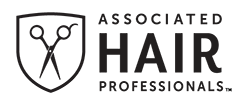Licensed esthetician and professional makeup artist Jalia Pettis shares her top tips for getting your foot in the door.
.jpg) In today's beauty industry, there is a sea of aspiring, novice, and experienced makeup artists looking for—and finding—good-paying gigs. What can help you get hired for a gig? I have some ideas.
In today's beauty industry, there is a sea of aspiring, novice, and experienced makeup artists looking for—and finding—good-paying gigs. What can help you get hired for a gig? I have some ideas.
Every makeup artist has a list of rules they intrinsically abide by to set them apart from the pack. Many tools, including literature, classes, and working professionals focus on this very topic. Two of my favorite speakers are Kevin James Bennett and DeShawn Hatcher; they’re both candid and knowledgeable.
When I started in the beauty industry, it was trial by fire. I did not initially have a mentor, and it wasn’t the popular profession to be in. I had to do quite a bit to get my name out there. I began using an alias that was witty and fun but pigeon-holed me into one type of clientele. I started doing research on business and marketing, and it changed how I wanted to be viewed as an artist. I improved my environment by relocating to an area where I believed I could flourish. I even went back to school to become licensed, and my career took off. I learned to use three key elements that continue to help me obtain clients:
• Portfolio
• Professionalism
• Persistence
Sounds simple, I know, but allow me to dive deeper.
Makeup Artist Portfolio:
A makeup artist portfolio should be a true representation of what type of artist you are. It should showcase what your specialties include, such as beauty, commercial, editorial, bridal, special effects, etc. It should also be clean, easy to read, and highlight diversity. Despite the misconception, do not solely rely on social media to be your calling card. Sure, it’s a vital part of any marketing strategy but not the only thing. High-resolution images are best, and web-size files can be used to create content on social media. A working makeup artist portfolio should be a website or a hardcover book with a variety of 8” x 11” images. Both formats should include your name, location, experience, and education. Print portfolios are great to have when meeting agents or agencies in person.
.jpg) Professionalism with Clients:
Professionalism with Clients:
The way we communicate plays a huge role in booking a potential client. As such, professionalism is extremely important. You never want to come across as a haughty or angry person. Have you ever had a telephone call with someone who sounded like they were having an awful day or didn’t have time to speak with you? It produces a negative effect, and your perception is tainted by the time you get off the phone. In contrast, have you received an email where the sender’s tone seemed pleasant and warm? A smile should be heard in your voice when speaking and in your tone when writing. When a potential client feels welcome, they will be more open in their communication, which in turn helps you to understand their needs. Email communication should be slightly formal, with proper grammar and punctuation. Read and re-read before clicking the send button.
Persistence with Customer Inquiries:
A potential client can come from just about any source—a web search, friend, family member, or a networking event. A past client can offer a referral, and in strong communities there are other artists who will refer one another when they aren't available. An inquiry can turn into a potential client. When you receive an inquiry, be sure to reply within 48 hours. We’re all busy, but your follow through is vital. Schedule a date to return the call or email. Organize your thoughts and prepare based on the information provided. Schedule a specific time to respond to inquiries with your calendar, laptop, and phone at your fingertips. The follow-up call is twofold: you’re answering questions the potential client may have and asking questions to get better understanding. If another call or email is required, be concise with what you need clarity on.
Each of these elements plays off the other. A diverse makeup artist portfolio showcases your work and opens the door. Your level of professionalism gives the potential client a glimpse into your business acumen. Finally, being persistent and consistent with follow through ties it all together. Once booked, remain in contact with the potential client. The only thing left to do is show up and put your skills to work! Stay professional and attentive throughout the gig and send your thanks after the job is complete. It will be motivation for the client to call and rebook you for any future needs and you will be well on your way to becoming a professional makeup artist.
Jalia Pettis, Licensed Beauty Professional
www.jaliapettis.com
